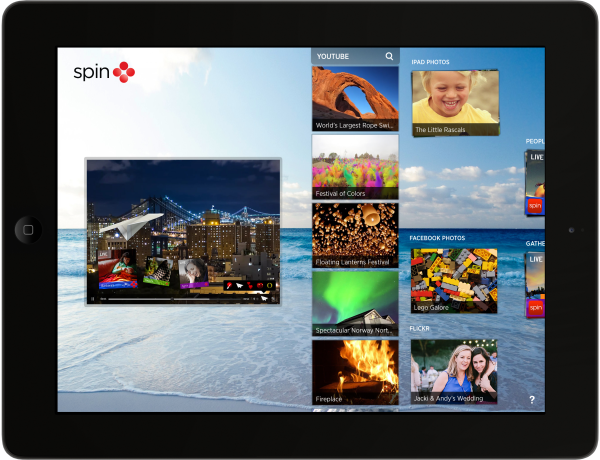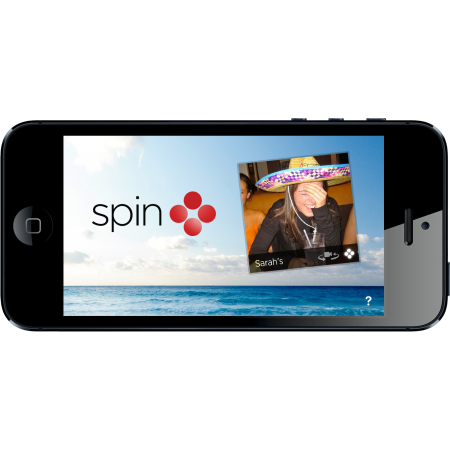
We were recently introduced to Spin, a new, and incredibly unique Human Fidelity – née video-chat – iOS application. The Human Fidelity moniker is crucial for the application. The motivation behind the app lies in human interaction, or rather the lack thereof within the current selection of mobile video chat applications. I had some vague ideas about Spin and how it works, but after speaking with Louise Callagy – the VP of Marketing and Communications for Net Power & Light (NPL), the company behind Spin – it became clear that it is no Skype or Hangout competitor; rather, Spin is more of an evolution away from the traditional video chat, or as PandoDaily called it, “Video Conference 2.0.”1
One of the main things that stuck me in my conversation with Louise was her diction in describing Spin; she took words traditional tech lexicon very sparingly. Louise spoke about Spin in terms of sense and emotions rather than in terms of technology and software. Instead of creating the next great, feature-rich video chat application, Spin was built with a clear focus on staying out of the way of users. Don’t get me wrong, Spin is incredibly feature rich and is built on some amazing technology, but that is all in pursuit of inconspicuousness. This pursuit was fruitful.
 NPL launched Spin on 1 October 2013, after three years of development and the filing of more than 80 patents. After using Spin, it is clear that those three years were well spent. Net Power & Light began building Spin from the ground up, perhaps from the underground up is more appropriate.
NPL launched Spin on 1 October 2013, after three years of development and the filing of more than 80 patents. After using Spin, it is clear that those three years were well spent. Net Power & Light began building Spin from the ground up, perhaps from the underground up is more appropriate.
The foundation of Spin lies in NPL’s proprietary LUX Operating Environment, for which the company had to built a new codec and syntax.2 That initial intensive work makes the app shine, its specs are a testament to that. According to NPL’s press release: “[Spin] delivers the best-combined audio, video, voice, image and touch quality that exists today. For example, with ultra wideband and 44 kHz, Spin’s audio is close to recording studio quality. And with interface animation at 60 frames per second, the visual experience is light, ?uid and cinematic, close to the highest quality HDTV today.”3
The UI/UX of Spin is also quite remarkable. Rather than the static, fixed-size boxes holding the chat’s other members, Spin’s environment is dynamic. Chat members – up to 10 – can easily re-size and re-position chat members within the environment through simple touch-based commands. What’s more, within this environment – which FastCompany called, “[a] shared virtual playground” – you can stream a YouTube video, share pictures from Flickr and Facebook – Louise told me that Spin will soon support sharing Instagram photos. Spin also allows users to draw or highlight within the environment.
It is clear that NPL has created something truly revolutionary. Spin is so much more than a video chat application. NPL’s description of Spin is as on point as any product descriptions I have ever encountered: “Spin: the ?rst mobile video communications experience capable of delivering truly immersive real-time ‘together’ experiences.”4 Rather than building a product to meet ideal specifications, or outperform competitors, Spin begins and ends with the users. Experience and interaction is the star of Spin, while the technology fades into the background in a supporting role.
As my words hardly do Spin justice, below is NPL’s product video. Spin is Free in the App Store.
- I am an Android guy, and was unable to try Spin out before speaking with Louise. I have since played with the app on a borrowed iPad. More on that further down in the post. ▲
- I should note here that I know very little about either codecs or writing new syntax commands, so that will pretty much conclude that topic in this piece. ▲
- NPL press release announcing Spin (PDF) ▲
- NPL Press Release (PDF) ▲

